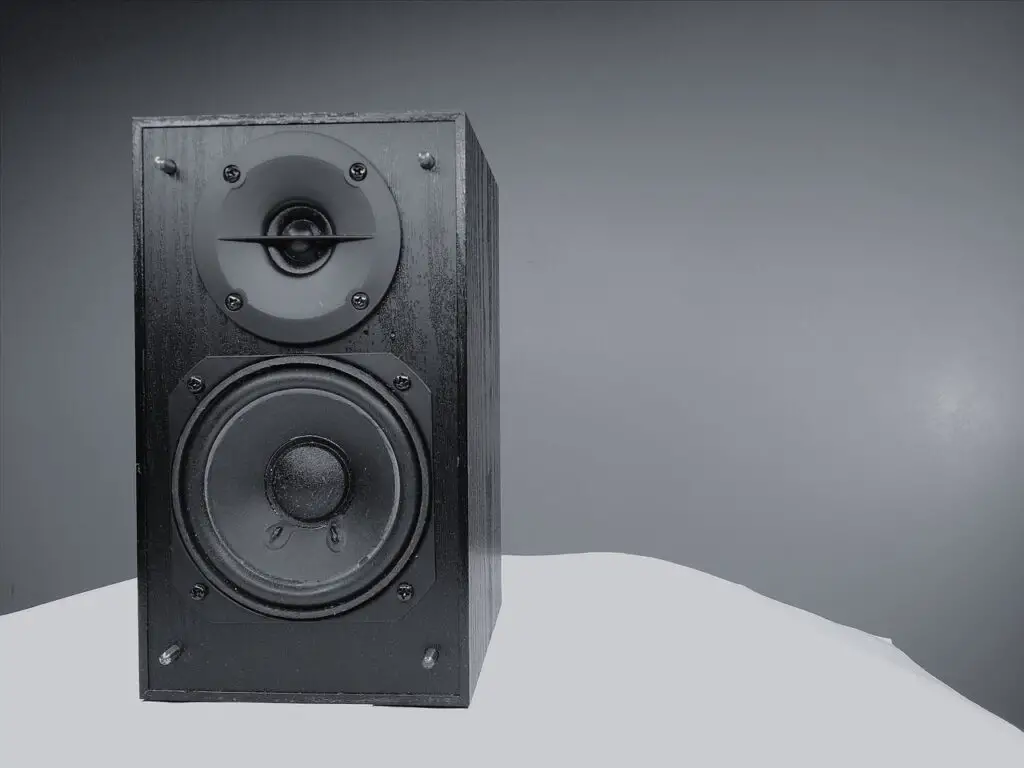Subwoofers are essential components of any sound system, and their placement can considerably impact the output quality.
Though it may appear stylish and attractive, it is essential to carefully evaluate all factors before deciding whether concealing subwoofers inside cabinets is best.
Some subwoofers require specific enclosure types for optimal performance, while others can work in any setting.
Some subwoofers can be mounted inside an enclosure, while others require room to breathe to produce optimal sound quality.
The material of the cabinet plays a significant role in sound output quality.
By considering these aspects and experimenting with different placements, users can achieve the optimal sound quality for their specific setup.
Significance of Subwoofer Placement
Regarding sound systems, many people prioritise investing in high-quality speakers but often neglect the significance of subwoofers.
Subwoofers can significantly improve the audio quality of music, movies, and other media files.
Subwoofers are designed to handle low-range frequencies that most speakers cannot handle, helping reduce recording distortion.
To fully appreciate what high-quality sound subwoofers can offer you, it’s essential to comprehend its significance.
Even if your speakers have surround-sound capabilities, adding an amplified subwoofer can take your listening experience to another level, particularly with genres like hip-hop, electronic dance music, and action movies with intense sound effects.
Subwoofers are essential to reproducing deep bass and rumbling vibrations found in music and movies, and without them, your sound experience would be incomplete.
Subwoofer placement also adds an artistic touch by enhancing the overall quality of audio produced by filmmakers or sound engineers.
With proper subwoofer placement, you’ll be able to pick up on all of the subtleties intended by filmmakers or engineers when creating sound mixes.
What Is The Optimal Placement For A Subwoofer?
When setting up a sound system in a living room, many people may conceal the subwoofer for aesthetic reasons.
This way, concealing the subwoofers can fade into the background and allow other components of your entertainment system to take center stage.
This approach may be especially advantageous for those with a formal entertainment center in their living room, as these may have designated compartments that conveniently house the subwoofer.
Designating a compartment for the subwoofer can also protect it from damage, as it shields it from dust and other particles in its environment.
Additionally, hiding the subwoofer inside a cabinet can help reduce clutter and give off an organized appearance, especially in smaller living spaces.
When placing subwoofers inside, consider both its size and the material of the cabinet; doing so ensures that sound quality is not compromised due to unwanted vibrations or distortion.
Is It Necessary For A Subwoofer To Be Placed On The Floor?
Elevating a subwoofer can enhance its sound quality, as placing it on the floor may cause unwanted vibrations and distortion.
However, it’s worth remembering that many subwoofers are designed for direct floor placement and will perform best in this position.
When placing a subwoofer, factors like room size, the layout of the space, and the speaker’s characteristics must all be considered.
Elevating a subwoofer by placing it on a stand or platform can reduce interference from nearby surfaces and enhance sound quality.
However, make sure the stand or platform is sturdy and doesn’t introduce additional vibrations or resonances.
Ultimately, experimentation may be required to determine the ideal placement for a subwoofer in any given space; consulting an audio professional for further advice may also be beneficial.
Do Subwoofers Require An Enclosure?
When upgrading your audio system with a subwoofer, it is essential to understand how an enclosure can improve sound quality.
Subwoofers require an enclosure to prevent sound waves from the cone’s rear from canceling out with those coming from the front, leading to unwanted distortion and diminished clarity.
An enclosure not only prevents cancellation but can also help regulate cone motion at high drive levels and low frequencies – this is particularly essential for achieving optimal sound quality in a car audio system.
Subwoofers can be vulnerable to distortion and other undesirable effects without an enclosure that regulates their movement.
When selecting an enclosure for your car audio subwoofer, you must consider its size, power handling capacity, and available space in your vehicle.
A properly designed and installed enclosure can help maximize your subwoofer’s performance, creating a more immersive listening experience while driving.
Can A Subwoofer Be Placed Behind A Sofa?
Placing a subwoofer behind your couch or sofa can provide an immersive listening experience with deep and powerful bass that adds another dimension to music or movies.
But it’s essential to note that this placement may not suit everyone in the room. You can enjoy smooth and clear audio with thumping bass from your vantage point.
However, others in the room may not be able to hear as clearly if they are sitting far away or at an angle from where the subwoofer is placed.
Additionally, placing a subwoofer too close to furniture or walls can cause vibrations that could distract or damage the item.
Therefore, it’s essential to experiment with different locations and pay close attention to the results when choosing.
Placing the subwoofer in a corner or near a wall can enhance bass frequencies while keeping it away from furniture and walls help minimise unwanted vibrations.
With some trial and error, you’re sure to find the ideal placement for your subwoofer that produces excellent sound for everyone in the room.
What Factors Can Cause Damage To A Subwoofer?
If your subwoofer isn’t functioning optimally, the damage may already have been done.
Generally speaking, two primary causes of subwoofer damage are too much power and an insufficient signal.
When a subwoofer is overexposed to too much power, its voice coil can become damaged and overheated.
This could happen if the amplifier is set too high or there are issues due to a mismatch between the power handling capacity and the amplifier set.
Clipping occurs when the audio signal sent to a subwoofer exceeds its maximum capacity, leading to distortion and potential speaker damage.
This can happen if the volume is too loud or the amplifier is overdriven.
To prevent damage to your subwoofer, use an amplifier that matches its power handling capacity and avoid pushing it beyond its limits with excessively high volumes or clipped signals.
By caring about how you use your equipment and staying within its limits, you can guarantee that your subwoofer will provide excellent sound for years.





